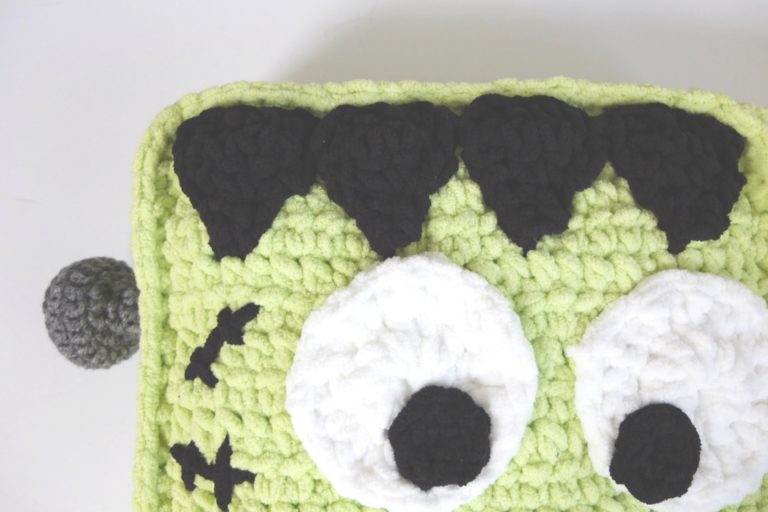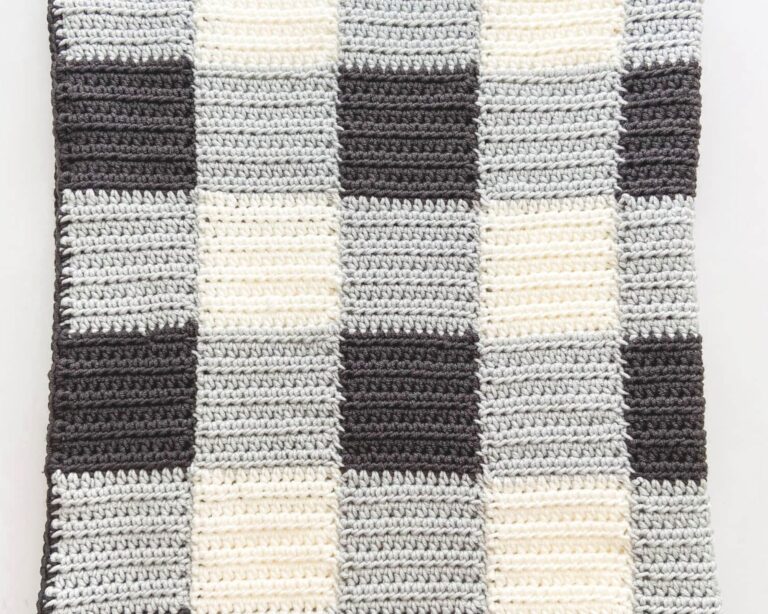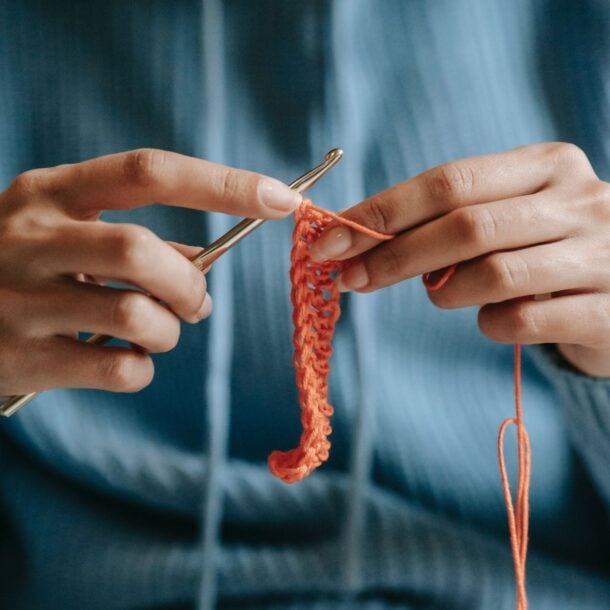Basic Shell Stitch Washcloth Crochet Pattern for Beginners To Practice The Basic Stitches
One of the most popular patterns for beginners are washcloths! Why? Because they’re quick to work up and a great way to practice new stitches. Plus, you can give them away as gifts or use around your own home! The Basic Shell Stitch Washcloth Crochet Pattern is one of the five best crochet washcloth patterns for beginners. Why? Because not only are we making something useful, we’re putting our new skills to the test! With the Basic Shell Stitch Washcloth Crochet Pattern, we’ll be practicing the single and double crochet stitches.
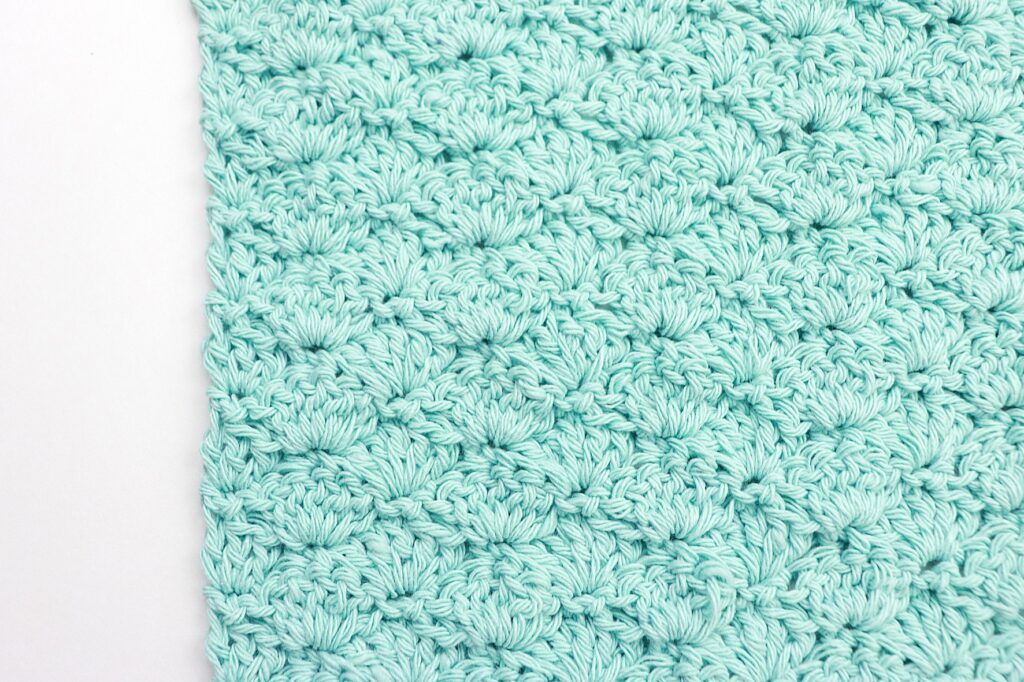
I love this washcloth design because of the shell stitches of course. Not only can you practice the double crochet a ton, but the shell stitch has such a beautiful texture. I bet this pattern would also look great using a variety of colors!
What will I learn through this pattern?
I put together this washcloth series as a way for crochet beginners to practice the basics, but also come away with something valuable.
By crocheting the Basic Shell Stitch Crochet Washcloth, you will learn a few different things. First and foremost, you will be practicing the single and double crochets. You will also learn how to create a double crochet shell, which is a very popular stitch for obvious reasons. Finally, you will learn how to create a simple single crochet border!
Then, of course, you will have your very own washcloth (or dish towel) to use around the house or to gift to a friend or family member! What can be better than that?
If you haven’t learned either of these stitches yet, head over to each of the tutorials before you continue with this pattern.
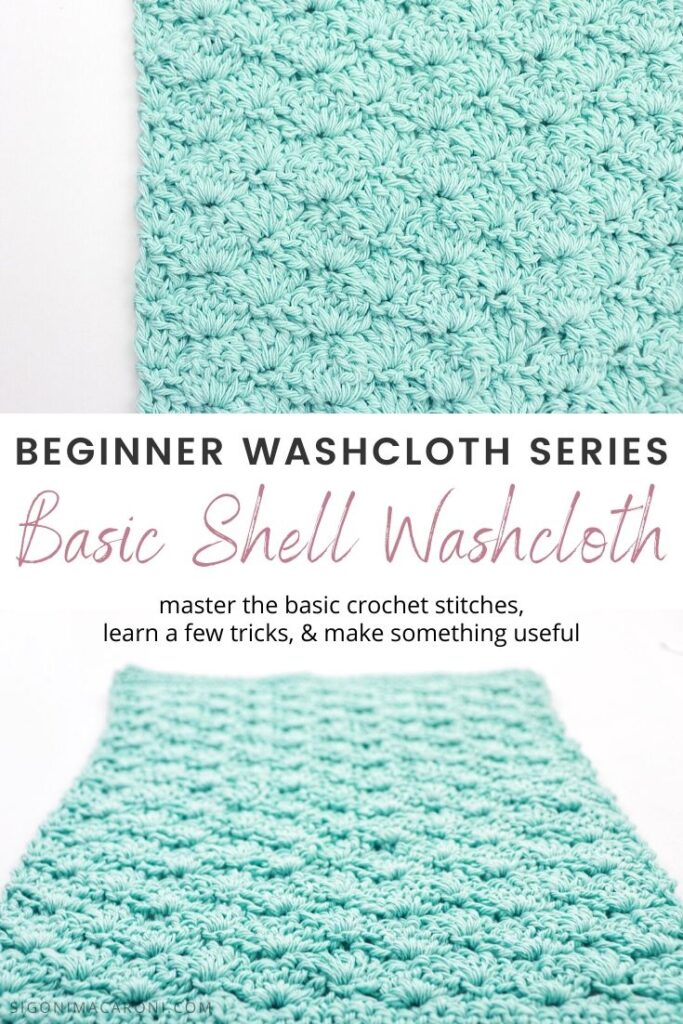
About the Beginner Washcloth Series
As I mentioned previously, I designed a set of these washcloths to help you practice the basic stitches as well as a few other skills. If you want to check out the rest of the patterns, you can find each of them listed below:
- Pretty in Pink Half Double Crochet Washcloth
- Simple Scrubby Crochet Dishcloth
- Treble Pop Crochet Washcloth
- Checkered Colorblock Crochet Washcloth
In the original post where I introduce each of the patterns, I also go over a long list of alternative yarns you can use. You’ll hear me repeat a few times that cotton yarn is the best yarn to use when making washcloths. Head over to that post now to read more about the many different yarns you can choose from.
Basic Shell Stitch Washcloth Crochet Pattern
This post may contain affiliate links, please view my disclosure policy for details.
It’s time to start practicing those beginner basics! Are you ready? There are a few things you need to know before you get started and they’ll each have their own section below.
Helpful Crochet Tutorials:
- Chain Stitch
- Single Crochet Stitch
- Double Crochet Stitch
- Basic Shell Stitch Washcloth Crochet Pattern Video Tutorial
Special Stitches:
- Shell Stitch – 5dc in one st
How to Resize your Washcloth:
Create your foundation chain in multiples of 6 + 2
Chain in multiples of 6 until you reach your desired length, then add 2 to the end of your chain.
Yarn Substitution:
When making your own washcloths, it’s best to use 100% cotton yarn. This is explained deeper in the post about all five washcloths, but I will list a few of my favorite cotton yarns below. If you don’t want to use 100% cotton, at least find something with a cotton blend.
Materials Used:
- Scrubby Smoothie in the color White (100% cotton – medium weight #4 – 131 yds)
- 5mm crochet hook
- Tapestry needle
- Scissors
Abbreviations Used:
- Ch – chain stitch
- Sc – single crochet
- Dc – double crochet
- St – stitch
- Sk – skip
- Rep – repeat
| US TERMS | UK TERMS |
| single crochet (sc) | double crochet (dc) |
| double crochet (dc) | treble (tr) |
Basic Shell Stitch Washcloth Crochet Pattern:
**Note: I’ve only created a small swatch to show what the stitch pattern should look like. Your project will of course be larger.
Row 1: Ch 38, sc in 2nd ch from hook and each ch down row.
Row 2: Ch 1, turn. Sc each st across.
Row 3: Rep Row 2
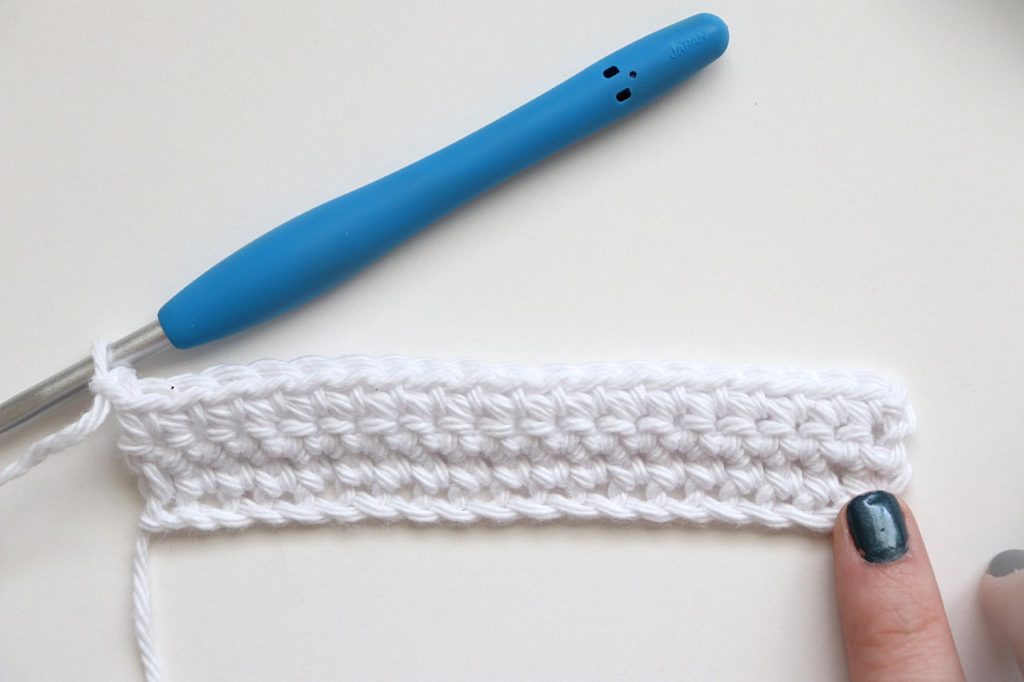
Row 4: Ch 1, turn. Sc first st, *sk 2 st, 5dc next st (you just created a shell), sk 2 st, sc next st. Rep * to end.
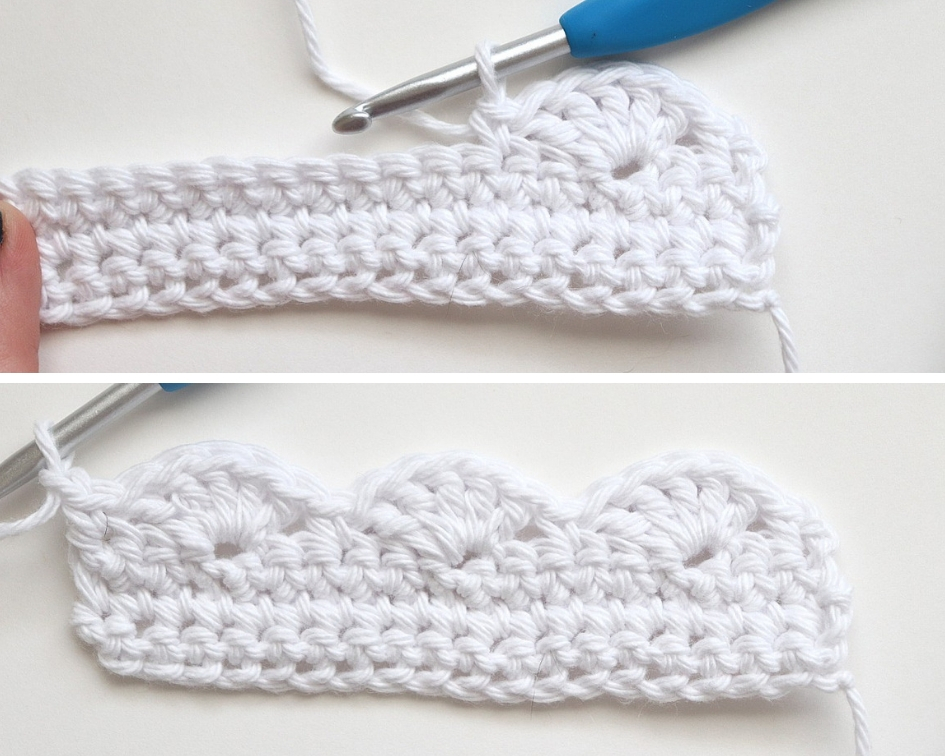
Row 5: Ch 3, turn. 2dc in first st (you just created a half shell). *Sk next 2 st, sc in the middle dc of the shell (the third DC). Skip next 2 dc, 5dc in next sc. Rep * down row. 3dc last sc
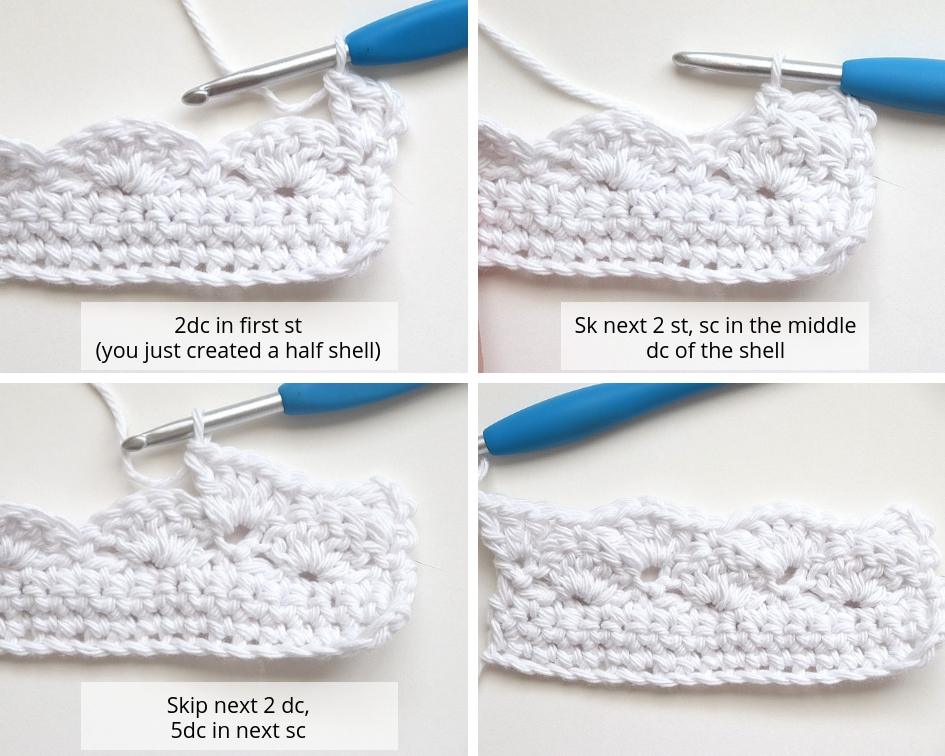
Row 6: Ch 1, turn. Sc first st, *sk next 2 dc, 5dc next sc, sk two dc, sc in the middle dc of the shell (the third dc). Rep * to last 6 st. Sk 2 st, 5dc shell next sc, sk 2 dc, sc last st (top of ch 3 from prev round).
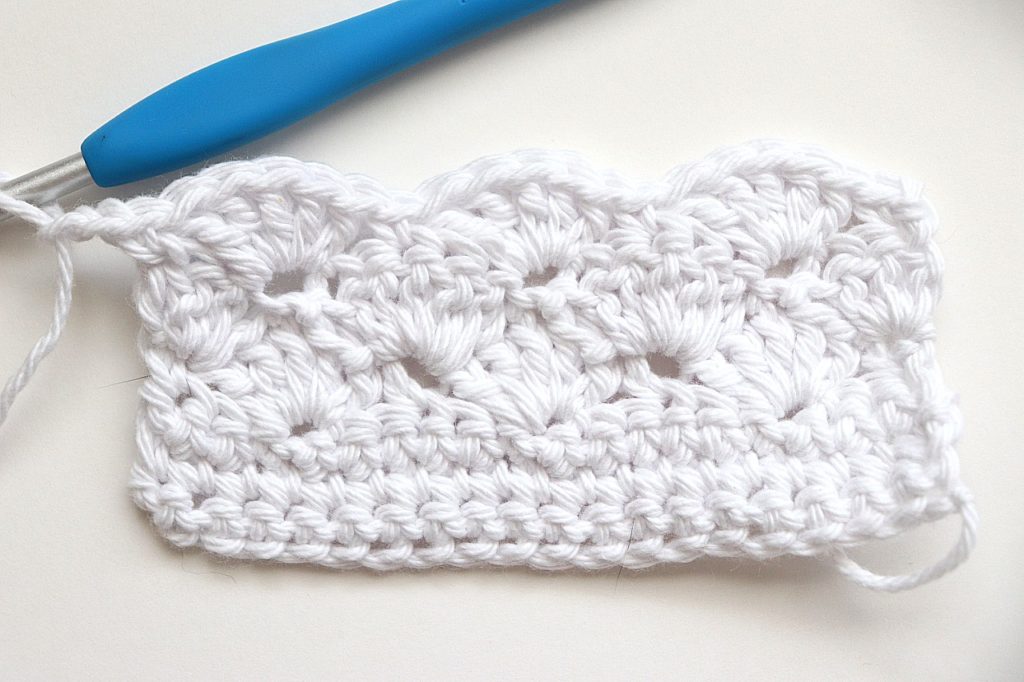
Rep rows 5-6 until you reach row 27
Row 27: Ch 1, turn. Sc in each st across
Row 28: Rep row 27
Row 29: Ch 1, turn. Sc across row until you reach last st. [Sc, ch 2, sc] in last st.
Do not break yarn – Turn work 90 degrees to work along side.
Border:
Row 1: Sc 40 evenly down side of work.
Row 2: Ch 1, turn. Sc across until you reach ch2 sp, sc in ch2 sp (41)
Row 3: Ch 1, turn. Sc across.
Tie off and weave in ends.
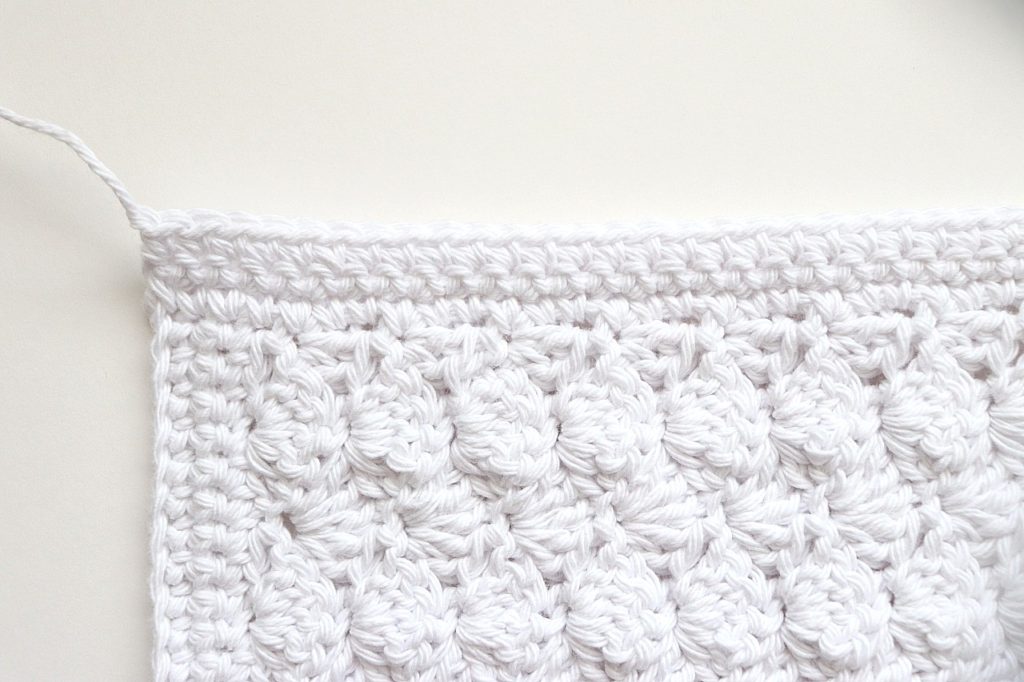
Reattach yarn to bottom right hand corner. You will be working along the opposite side you were just working.
Row 1: Ch 1, sc 41 evenly across
Row 2: Ch 1, turn. Sc across
Row 3: Rep Row 2
Tie off and weave in ends
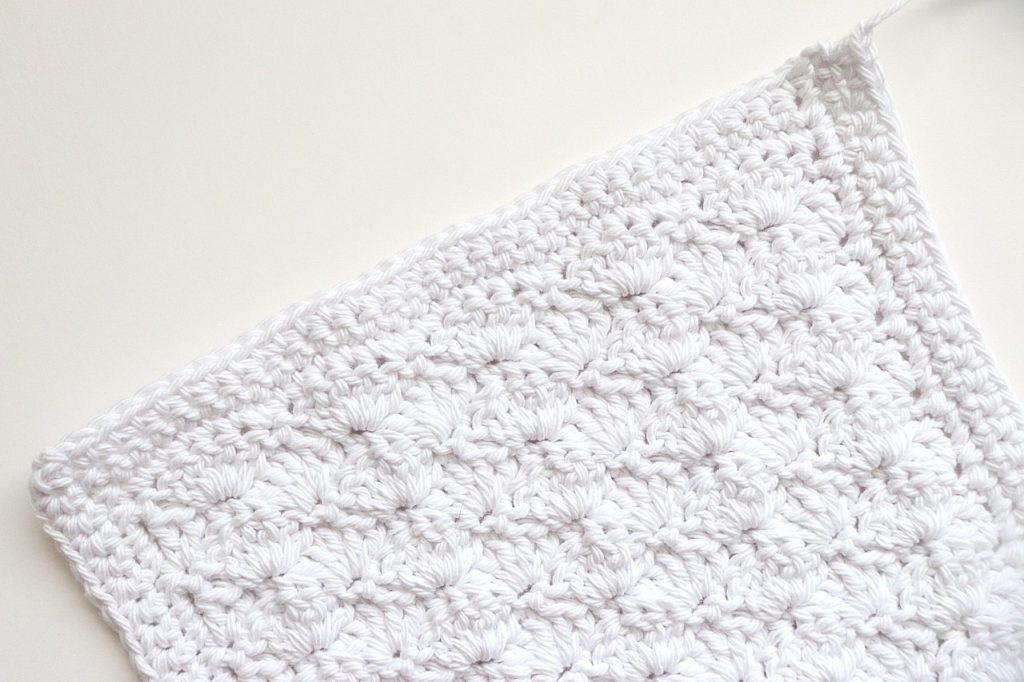
And that’s all for the Basic Shell Stitch Washcloth Crochet Pattern! I hope you learned a lot through this pattern, as that is my goal around here.
This particular crochet washcloth pattern was designed to help you practice the single crochet as well as the shell stitch. The shell stitch consists of five double crochets all in the same stitch and is a popular stitch for many gorgeous patterns. You were also able to practice creating a border! This type of border would look great around a finished blanket.
If you’d like to practice more of the basic crochet stitches and techniques, check out the other four quick & pretty crochet washcloth patterns! Each of them has a different stitch or technique for you to learn and by the end, you’ll start feeling like a pro!
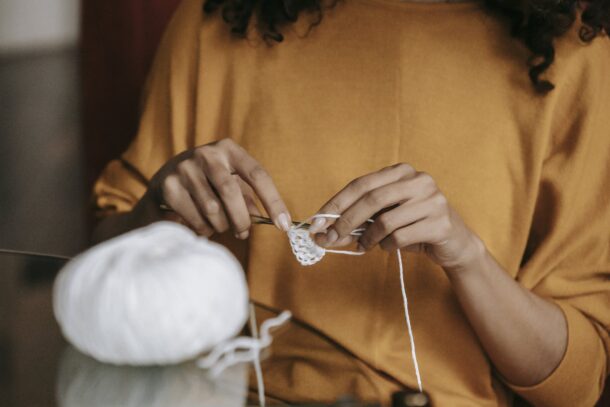
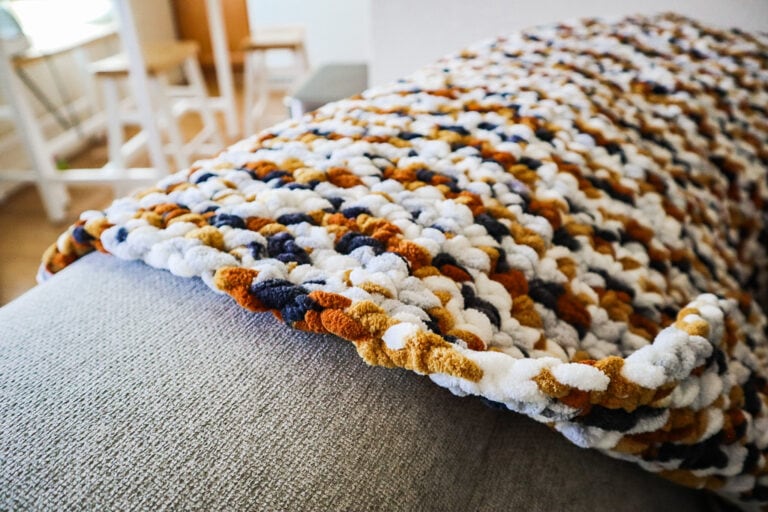
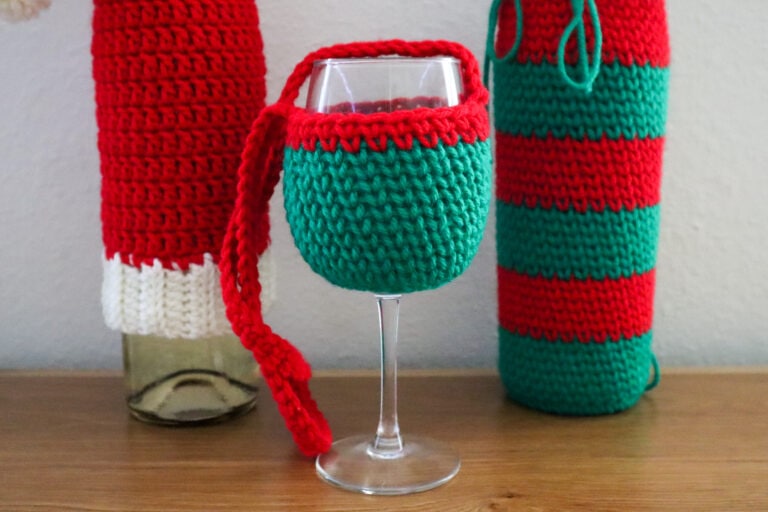
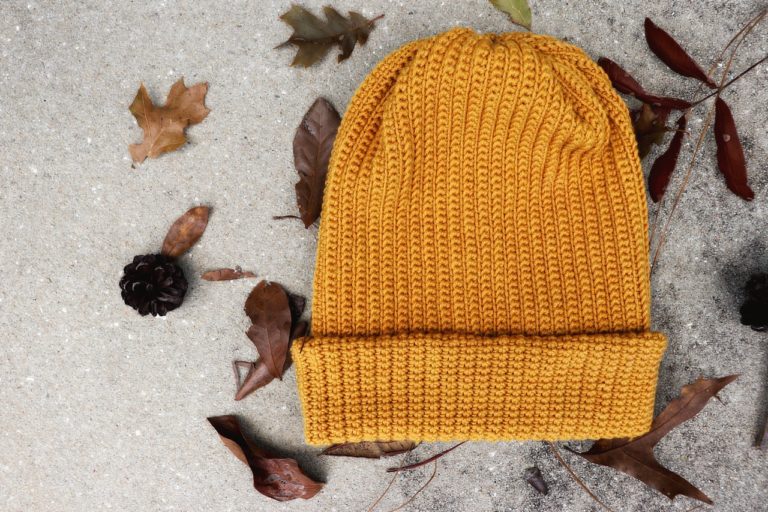
![Mandala Monsters Crochet Pattern Collection [Lookbook]](https://www.sigonimacaroni.com/wp-content/uploads/2018/09/mandala-monsters-crochet-collection-768x512.jpg)
